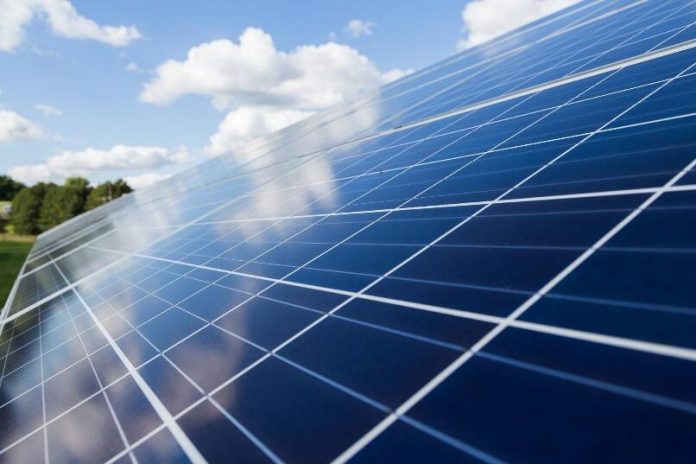The Ministry of Energy and Environmental Protection of Ukraine is considering slashing feed-in tariffs (FITs) for existing large scale PV plants 15-25%, trade body the Ukrainian Association of Renewable Energy (UARE) has told pv magazine.
An announcement to that effect was reportedly made by Konstantyn Chyzhyk, deputy minister of energy and environmental protection, during the Ukrainian Energy Forum event.
The FIT cuts under consideration would see solar plants with a generation capacity of up to 10 MW shoulder a 15% reduction in payments with the figure rising to a 20% cut for 10-50 MW projects and 25% for larger facilities. Chyzhyk reportedly offered to soften the blow for developers by extending the term of affected ten-year contracts by five years.
The FIT program which expired at the end of last year paid large scale, ground-mounted PV projects €0.1502/kWh over a period of 10 years.
‘Voluntary’
An alternative method of reducing the cost of subsidizing Ukrainian solar would see developers of PV projects of all sizes agreeing to take a “voluntary” 12.5% FIT reduction. Russian press agency Interfax reported Chyzhyk told the energy forum on Thursday: “The logic of this option is that such a reduction is much smaller than a decrease [combined with] extending the payment term. [Either] you pass restructuring, extending the payment term but at the same time you lower the feed-in tariff by a larger percentage, or you [do] not extend [the] payment term but at the same time take a slightly lower tariff reduction.”
With Ukraine currently sparing solar developers costs of imbalance – the obligation to financially compensate the grid for over or under-production from their generation assets – the National Investment Council head of office reportedly warned, project owners who do not agree to voluntary cuts will face the introduction of such payments this year. Developers who play ball, however, will not have to pay such costs until 2022, Chyzhyk reportedly suggested.
The energy forum also reportedly heard the proposed retroactive FIT cut for wind power facilities would be 10% combined with five-year payment contract extensions.
Investor confidence
Renewables lobby group the UARE said the proposals flew in the face of plans announced by Ukrainian president Volodymyr Zelensky to attract renewables investment.
“If the proposal of the ministry … will be implemented, the country will lose the trust of investors and the plan of attracting $50 billion of investments within [the] next five years will [fail],” the trade body stated.
The association revealed the government had been in talks with the renewables industry since October as it attempts to reduce a financial deficit at the Guaranteed Buyer, a state-owned body which must purchase all renewable energy generated in Ukraine.
“Since that time [October] a lot of working group meetings were held where investors offered changes that can be acceptable for them,” the UARE said. “Unfortunately, offers presented by the Ministry of Energy and Environmental Protection of Ukraine on Thursday are far different from those investors can agree on. The proposed changes are not acceptable for the producers of electricity from renewable energy sources, as they will lead to … investment default.”
Counter-offer
The association added, there are already delays in renewable energy payments which negatively affect market and investor sentiment.
The UARE said its members had proposed a 10% FIT cut for clean energy facilities with a generation capacity of up to 10 MW and 15% for larger projects, with the reduction applied only to facilities operational from the start of 2017 to the end of last year. In return, developers asked for contract extensions to the end of 2034.
The trade body asked for small solar projects – with a capacity of less than 1 MW – to be exempted from costs of imbalance obligations along with all facilities which entered operation before June 11, 2017, when an ‘On Electricity Market’ law came into force. In the event of government plans for a voluntary FIT cut to be offered, the UARE suggested developers who do not accept such payment reductions could pay costs of imbalance from next year. Developers who accepted such a payment regression, suggested the trade body, could pay only 10% of such costs next year, with the percentage rising 10% annually to hit 100% in 2030.
Ukraine had 1.3 GW of installed PV capacity at the end of 2018, according to International Renewable Energy Agency statistics. Large projects commissioned last year included a 240 MW solar plant and a further 240 MW of net-metered rooftop PV was also deployed, ensuring the nation currently boasts at least 1.8 GW of solar capacity.






